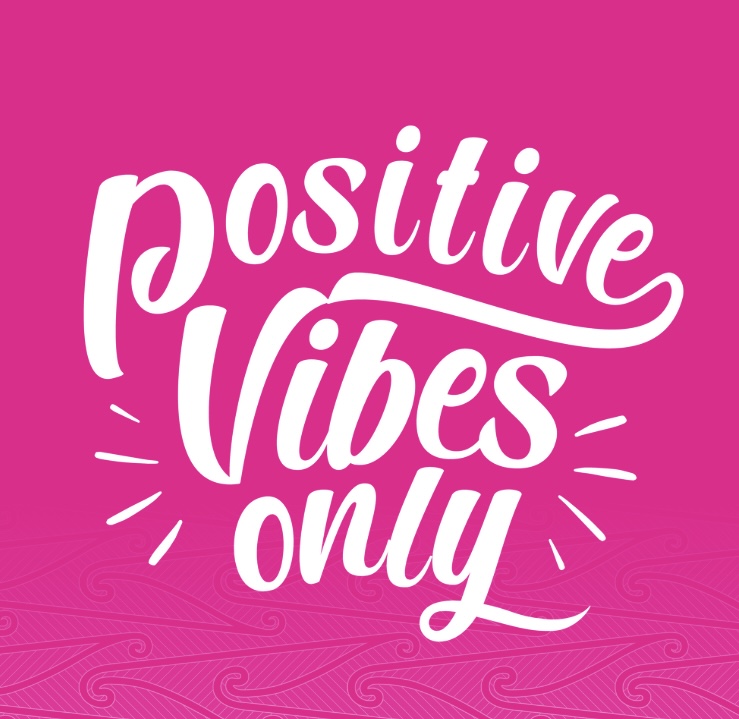In a world filled with affirmations, gratitude journals, and Instagram captions urging us to “vibe high” and “focus on the good,” the mantra “positive vibes only” has become something of a cultural religion. I often hear it around me.
I know people who put “positive vibes only” on dating apps, as code for “no drama” in relationships. I even had a partner once who, when I told him I felt sad, simply replied: “Just think of nice things.” Needless to say, that relationship didn’t meet my ’emotional depth criteria’.
But what if this relentless focus on positivity is actually making us unhappier and disconnected in relationships?
At first glance, it sounds harmless, even inspiring. Who doesn’t want to feel good? Who wouldn’t prefer joy to sadness, confidence to fear, hope to despair? But when the pursuit of positivity becomes a demand to suppress everything else, it doesn’t create happiness. It creates pressure, denial or shame.
As happiness researcher and Harvard professor Arthur C. Brooks notes, sustainable well-being isn’t about chasing a constant state of euphoria. It’s about managing the full spectrum of human emotions, and building the emotional fitness to do so skill fully.
The Danger of Forced Positivity
Arthur C. Brooks writes that one of the most destructive myths about happiness is the idea that you must feel good all the time to be happy. In fact, he calls this “the tyranny of positivity.” It implies that if you’re sad, anxious, grieving, or simply not glowing with gratitude, you must be doing life wrong.
But according to Brooks, true happiness is not the absence of negative emotions, it’s the ability to coexist with them without being overwhelmed. He emphasises that suffering, struggle, and even sadness have evolutionary and emotional value. These feelings teach us. They connect us. They are part of what makes us human.
Suppressing them in favor of “positive vibes only” leads to what psychologists call toxic positivity, an emotional avoidance strategy that can actually amplify distress, create alienation, and increase the risk of anxiety and depression. As well as creating disconnect in relationships.
Acceptance Over Avoidance
Brooks draws from neuroscience and philosophy alike when he reminds us: happiness isn’t found in the rejection of suffering, but in the acceptance of it. He often references the Stoics, who knew that by trying to control what is uncontrollable (our emotions, or the circumstances that trigger them), we create suffering. But by accepting what is, we build freedom.
The key is not to dwell endlessly in darkness, but neither is it to pretend it doesn’t exist.
In coaching, this distinction matters. If a client is experiencing burnout, heartbreak, or doubt, telling them to “just focus on the positive” often creates distance rather than healing. It ignores the body’s signals, the nervous system’s messages, and the rich data embedded in emotional discomfort.
Instead, a more grounded approach, one Brooks advocates, is to name what is real, accept it without judgment, and then choose your next response consciously, rather than reactively.
Happiness Is Not a Feeling. It’s a Skill.
Arthur C. Brooks argues that happiness is not a destination or mood, it’s a skillset. Like physical fitness, it’s something you build with habits, awareness, and consistent effort. It includes:
- Emotional awareness (being able to name and allow your feelings)
- Healthy detachment (not identifying with your emotions as permanent truths)
- Spiritual grounding or purpose (a why that’s bigger than your temporary discomfort)
- Connection with others (which often grows deeper through shared vulnerability, not just shared joy)
These pillars allow for real happiness, not the sugar-coated version found in ‘social media mantras’, but the deep, sustaining kind that weathers storms.
- The Paradox: Embracing the Bad to Cultivate the Good
Ironically, one of the best ways to create space for genuine joy is to allow sadness its place. As Brooks highlights in his Atlantic columns and his book From Strength to Strength, people who can reflect meaningfully on their struggles often report greater well-being, more resilience, and richer relationships.
So perhaps the question isn’t: “How do I stay positive?”
But rather: “How do I stay whole?”
That includes the full palette of human experience, from grief to gratitude, despair to hope.
In Coaching: We Don’t Paint Over Pain. We Work With It.
In my coaching work, I’ve seen again and again: it’s the clients who are willing to sit with the discomfort, who dare to look at the places that hurt without flinching, who move forward the fastest. They become not just more resilient, but more vibrant, more grounded, more fully themselves.
If you’re tired of pretending everything’s fine when it isn’t, or if you’ve tried the positivity route and found it lacking, coaching can offer something deeper: clarity, emotional strength, and tools to create real, lasting change.
Arthur C. Brooks has written many amazing books about happiness, check them here.
Reach out. Let’s explore your next step together

